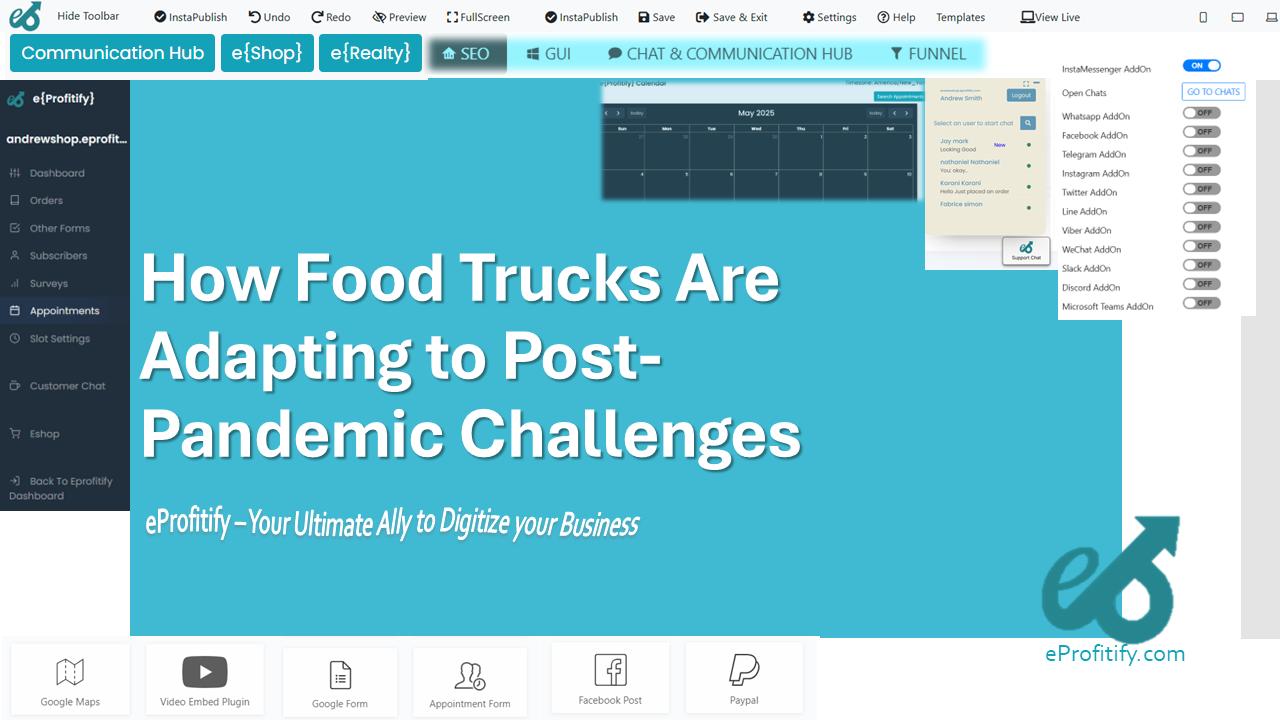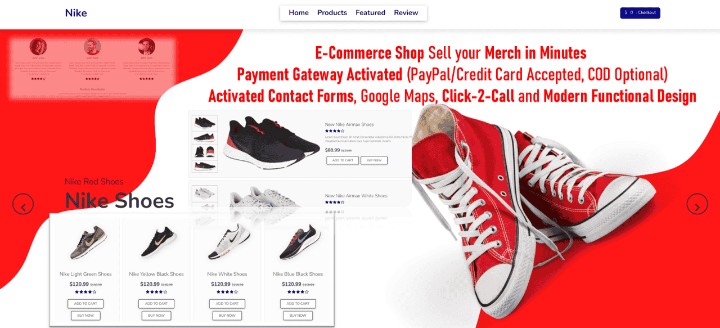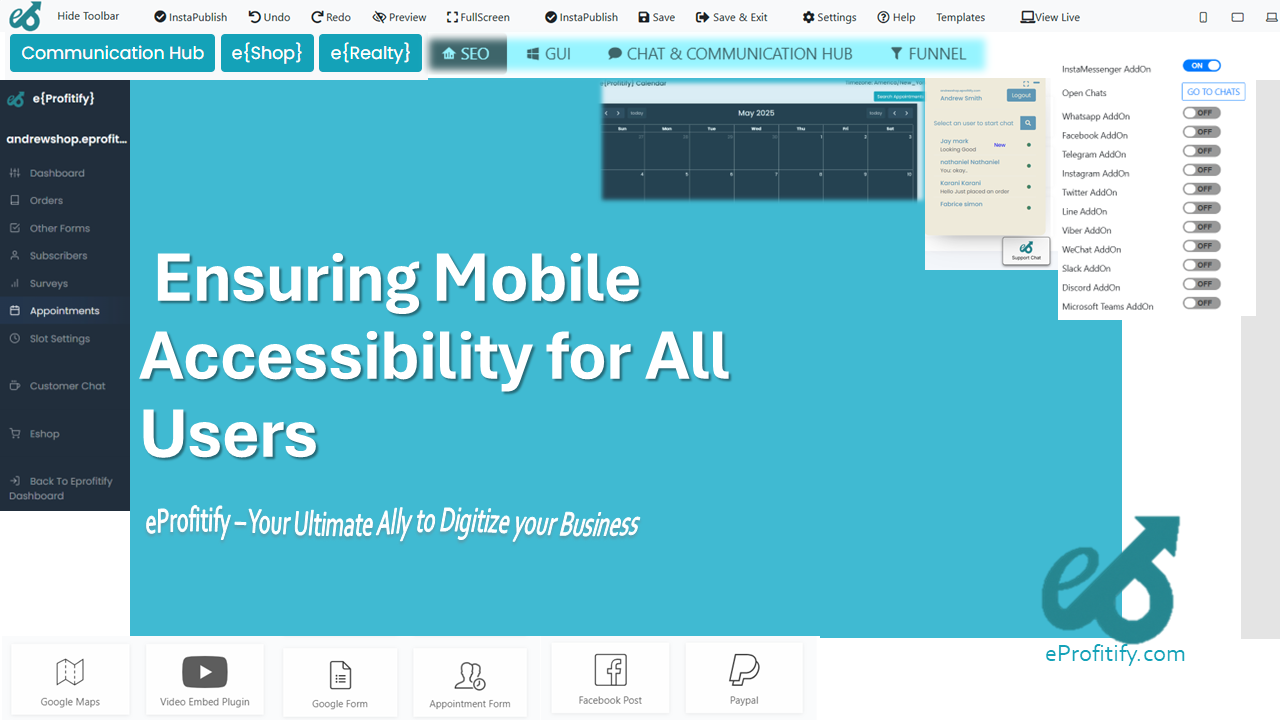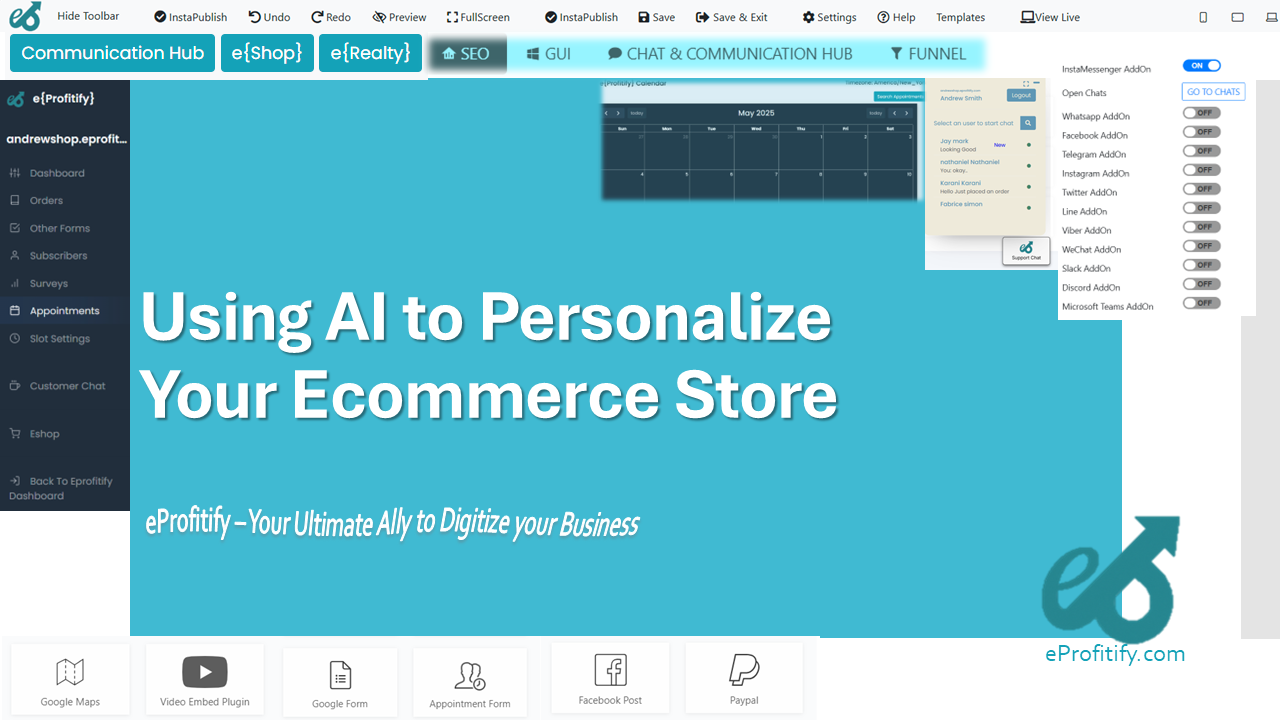How Food Trucks Are Adapting to Post-Pandemic Challenges

Schedule a LIVE Zoom call with an eProfitify Expert.
How Food Trucks Are Adapting to Post-Pandemic Challenges
By leveraging technology and innovation, food trucks are navigating a transformed landscape.
Introduction
Before the COVID-19 pandemic, the U.S. food truck industry was thriving, valued at $1.2 billion in 2019, with a reputation for innovation and accessibility (IBISWorld). However, lockdowns and social distancing mandates hit the sector hard. By mid-2020, 23% of food trucks had temporarily or permanently closed, crippled by lost foot traffic and event cancellations. As the world reopens, operators face new challenges—but they’re adapting creatively, with technology playing a pivotal role. Platforms like eProfitify, a leading website publishing and management tool, are empowering these mobile eateries to thrive in a post-pandemic economy.
Post-Pandemic Challenges
The road to recovery remains uneven. Key hurdles include:
- Shifting Consumer Preferences: 60% of diners now prioritize contactless payment options, while 45% order takeout more frequently than pre-pandemic (National Restaurant Association).
- Economic Pressures: Inflation has driven ingredient costs up by 15% year-over-year (U.S. Bureau of Labor Statistics), squeezing margins.
- Labor Shortages: 72% of hospitality businesses report staffing challenges (National Restaurant Association), complicating operations.
- Competition: Restaurants now fiercely compete for off-premise dining, with 53% of full-service brands offering curbside pickup (Statista).
Adaptation Strategies
To survive, food trucks are embracing agility and innovation:
1. Digital Transformation
Online ordering and delivery have become lifelines. A 2022 survey found that 40% of food trucks now offer direct digital ordering via their websites, bypassing third-party apps that charge 15–30% commissions. Tools like eProfitify’s ecommerce integration allow vendors to build branded online stores, manage orders, and process payments securely—retaining more profits. QR code menus, adopted by 55% of trucks, further streamline contactless service.
2. Social Media & Targeted Marketing
With 70% of customers discovering food trucks via Instagram (UpMenu), operators are doubling down on visually driven platforms. eVentify’s social media management tools enable scheduling posts, analyzing engagement, and launching geo-targeted ads to attract crowds at specific locations.
3. Menu Diversification
Health-conscious and plant-based options are booming. A 2023 study noted that 65% of food trucks expanded vegan/vegetarian menus to meet demand. eProfitify’s CRM helps track customer preferences, allowing operators to tailor offerings and launch personalized promotions via email or SMS.
4. Collaborations & Events
Food truck festivals rebounded in 2023, with events up 50% from 2021 (Mobile Cuisine). Trucks use eProfitify’s appointment management system to book catering gigs or private events, ensuring seamless scheduling and deposit collection.
5. Sustainability Initiatives
Eco-friendly packaging is now a differentiator, with 60% of consumers favoring businesses that reduce waste (Nielsen). Some trucks use eProfitify’s loyalty program features to reward customers who bring reusable containers, fostering community goodwill.
The Role of Technology: eProfitify as a Catalyst
Food trucks operate on tight margins, making integrated, cost-effective tools essential. eProfitify emerges as a game-changer by consolidating critical functions into one platform:
- Instant Messaging: Reduce customer wait times with real-time chat for inquiries about locations or allergens.
- Ecommerce: Launch an online storefront for pre-orders, meal kits, or merchandise without third-party fees.
- Appointment Management: Secure event bookings and track schedules to maximize revenue streams.
- CRM: Analyze sales data and customer feedback to refine menus and marketing strategies.
Businesses using eProfitify report a 40% boost in customer engagement and 25% higher retention rates, according to internal data. For example, a Los Angeles taco truck attributed a 30% revenue increase to streamlined online orders and social media integrations via the platform.
Conclusion
The pandemic forced food trucks to rethink their models, but their resilience underscores the sector’s adaptability. By embracing digital tools, diversifying offerings, and prioritizing customer experience, mobile vendors are not just surviving—they’re thriving. Platforms like eProfitify are central to this transformation, offering scalable solutions that empower small businesses to compete in a dynamic market. As consumer habits evolve, food trucks that leverage technology will continue to lead the charge, proving that even the smallest kitchens can drive big innovation.
Sources: IBISWorld, National Restaurant Association, Statista, U.S. Bureau of Labor Statistics, Nielsen, Mobile Cuisine, eProfitify case studies.








